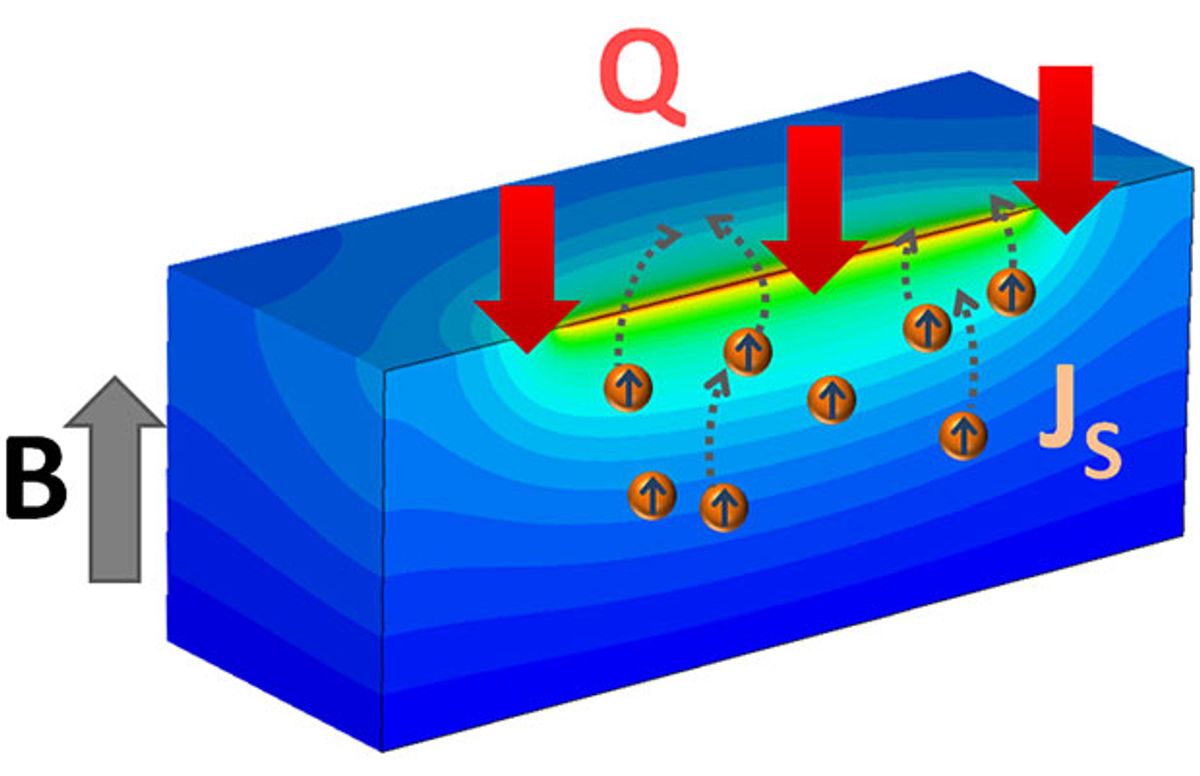Spintronics, which has offered a promising alternative to electronics, may have just been given a boost that moves it from mere promise to likely future backbone of computing.
A young researcher at Argonne National Laboratory has stumbled upon the amazing discovery that a magnetic material may not be required in order to generate spin current from insulators. The implications of this discovery, which are described in the journal Physical Review Letters, could be far reaching and make possible the continued trend towards ever more powerful computing.
“This is a discovery in the true sense,” said Anand Bhattacharya, a physicist in Argonne's Materials Science Division and the project's principal investigator, in a press release. “There’s no prediction of anything like it.”
The hope of spintronics stems from its use of the spin of electrons to encode information rather than the transport of electrical charge of electrons. This fundamental difference is believed to be a solution to many of the problems associated with electronics, such as high power consumption and the need for more space on a chip.
To date, to be able read the spin of the electrons, which is either “up” or “down,” electrons have had to be held in place in a ferromagnetic insulator material, like yttrium iron garnet (YIG). With the electrons held up momentarily, a heat gradient is applied to the material to set the spin of the electrons in motion again. Once they are spinning across the lattice of the crystal insulator, they start communicating information about the orientation of their spin. In this way, just like an electrical current is a stream of electrons moving through a conductor, a current of pure spin can be achieved in magnetic insulators.
Stephen Wu, the postdoctoral researcher who made the discovery, was looking at different materials that would make it possible to produce smaller spintronic devices and provide greater control over the thermal gradients that needed to be applied to the material to start the current spin of the electrons.
It was during this experimentation with different materials that Wu found himself working with YIG on a substrate of paramagnetic gadolinium gallium garnet (GGG). Because the GGG is a paramagnet and not a ferromagnet, Wu didn’t expect to see any spin because the paramagnet doesn’t generate a magnetic field.
“The spins in the system were not talking to each other. But we still found measurable spin current,” said Wu in the release. “This effect shouldn’t happen at all.”
What the researchers observered, in fact, was that the spin current was stronger in the GGG than in the YIG. It is an amazing scientific discovery, but at this point, the best the scientists can do is speculate regarding why the phenomenon occurs at all.
“We think that there may be other new physics working here,” said Bhattacharya in the release. “Because, since the material is not a ferromagnet, the objects that are moving the spin are not what we typically understand.”
Even while understanding of the physics that explain the phenomenon plays catch up, the researchers see an opportunity to push ahead the state-of-the-art in spintronics.
“We’ve just taken ferromagnetism off its pedestal,” said Wu in the release. “In a spintronic device you don’t have to use a ferromagnet. You can use either a paramagnetic metal or a paramagnetic insulator to do it now.”
Dexter Johnson is a contributing editor at IEEE Spectrum, with a focus on nanotechnology.



